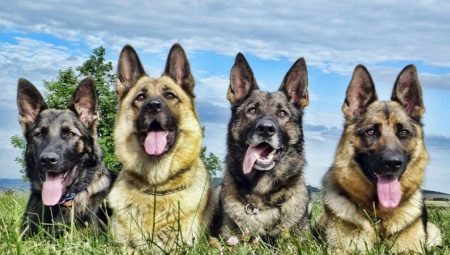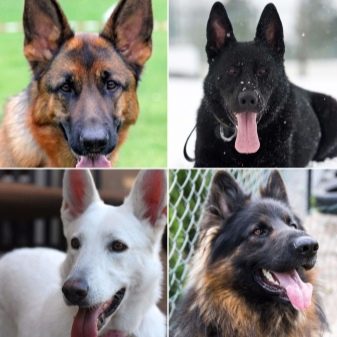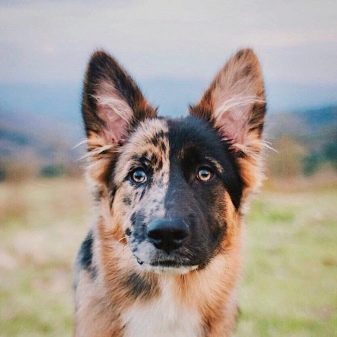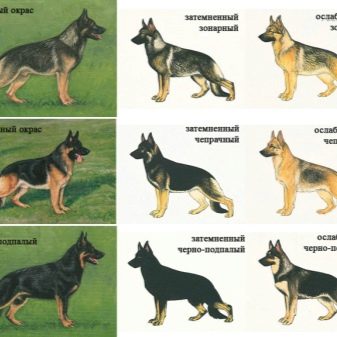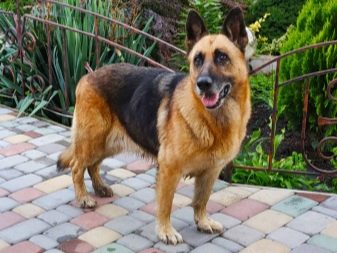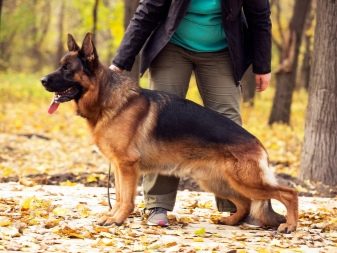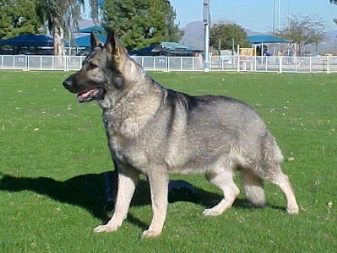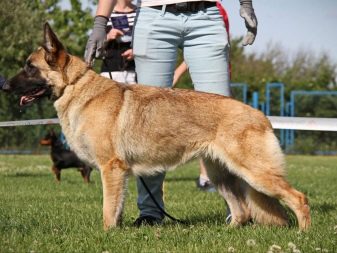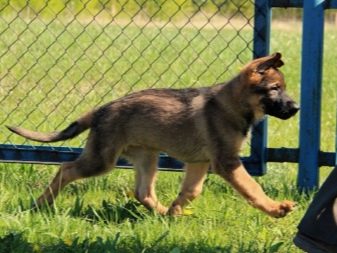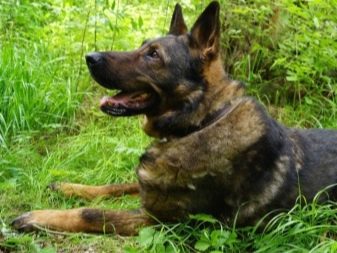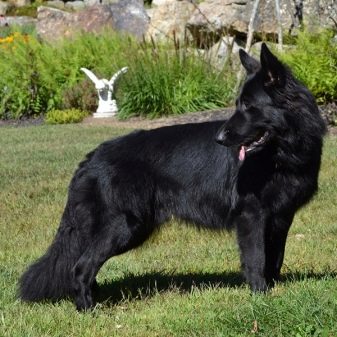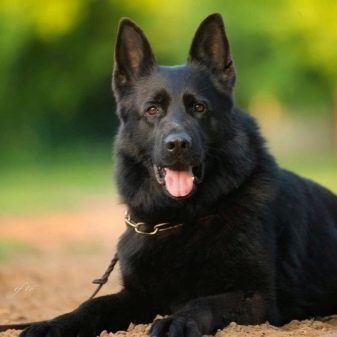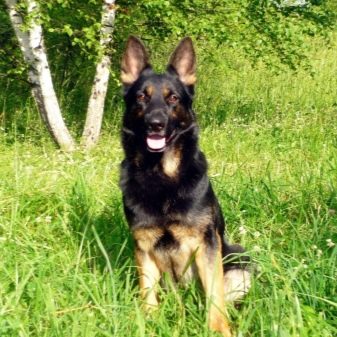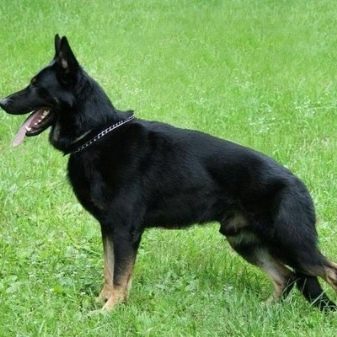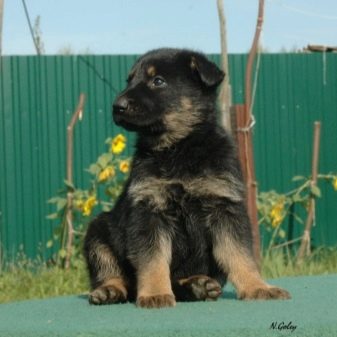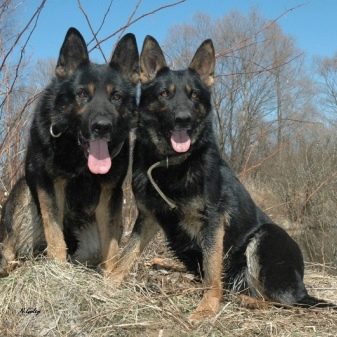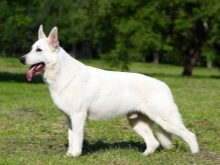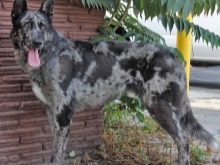Sheepdog - a dog that is perfectly adapted for life in the metropolis. She can be a working dog, and can be kept in an apartment as a companion. Devotion, helpfulness, obedience - all these are traits of a purebred shepherd.
And, of course, every dog lover wants to become the owner of a true representative of the breed that meets the standards. After all, these individuals manifest all the best qualities. It is possible to determine the belonging to the standard by the color of the pet.
What determines the color of the coat?
The color of these dogs is determined by three genes: a is black, aw is zoned, and at is black. All other color options are formed as a result of mutation. In the case of a significant deviation from the color of an individual is rejected.
Many works on the genetics of shepherd dogs created by Malcolm B. Willis. He points out that differences in color depend on the presence of pigment - melanin, which may be present in the form of eumelanin and pheomelanin. Eumelanin provokes the formation of black or dark brown wool in shepherd dogs, and pheomelanin affects the development of yellow or reddish coloration.
In addition to color, when the individual is included in the breed standard, the type of cover is taken into account. It can be shorthair or longhair dogs. It is impossible to predict in advance what length the animal will have, only after a few molts will the length of the cover become clear. It is impossible to cross two individuals with different types of wool. The valuables include the "Germans" who have a rich dark nose and a faint gray shade of undercoat.
Deviations also include such external indicators as the absence of a mask on the face, eyes of light color, whitish spots on the chest or on the paws, white claws, the tip of the tail of a red color.
Allowable colors
The standard includes four options for acceptable colors for dogs of the breed presented.
Black
The most common color. This is the traditional version, although in their working qualities such dogs are inferior to some other specimens. Opposite color is meant, meaning the presence of a large dark area in the form of a V-shaped mantle on the back, falling to the sides to the elbows. Allocate black, gray and blackened variants of black color.
Also this option color can be divided into deep and weakened cheprak. The clarified area is called tan, it can be red, brown, gray or yellow. Color saturation may vary. For such dogs is characterized by a dark mask on the face.
In this case, the chest may be completely black, partially black, or lacking black wool. Each black or tan individual has an individual pattern of these areas.
Zonar
It is this color had the most ancient ancestors of German shepherds. Each hair of wool is dyed in several shades, which go in the following order:
- the plot is bright;
- the black;
- yellow or brown;
- the black.
Different combinations and color saturation determine the type of color, only two of them - zone-gray (wolf) and zone-red. In the first case, gray and dark gray shades and a whitish undercoat prevail. A distinctive feature of zonar-red dogs is the presence of black, black and red areas with the preservation of a light shade and a circular design of hair.
The gene inherent in dogs with zonar color is dominant. This means that when mixing two different stripes, the puppies will definitely get just such a coloring. This color has lost its popularity after active breeding of dogs of black color, although it is animals with zonary type of wool that have some advantages:
- these individuals are superior to other shepherd dogs in their working qualities;
- This is the most successful option to improve pigmentation during breeding;
- from the zona-gray individuals there are no long-haired young.
The black
This type is characterized by black shining wool with no other shades. This is a very rare color, only 0.1% of “Germans” have a black coat. Most often, representatives of the black variety are used as working dogs, they practically do not participate in exhibitions.
Getting such a puppy is possible only by crossing two of the same sheep-dogs. The fact is that if black is only one of the parents, then the genes of his partner will prevail in the color of the calf, since black is a recessive color when breeding shepherd dogs. Such dogs are highly valued.
In other dog breeds, the gene responsible for black color always becomes dominant.
Black and tan
Even more rare color options. This suit looks like this: its primary color is black, and the tan is formed on the cheekbones and eyebrows, on the chest, on the legs, under the tail. The coloring in some cases can be compared with the color of Doberman's wool. Black and tan instances are used only for service. This option is not always considered as a separate color, as it is derived from other shades.
Such individuals can be classified into dogs with a darkened, weakened color and with colors like Doberman. In the first case, the puppy is born almost black, but under the tail you can see a gray, red or fawn area, as well as spots on the legs. The color of an adult individual looks like a black one, only darker shade.
Cubs with a weakened tan are born completely black, but with age they experience the formation of a brown or yellow undercoat, light patches on the paws - these signs form a beautiful, impressive tan. However, the inheritance of this color is very unstable, it leads to a weakening of pigmentation in the young. Even if you cross such an individual with a dark partner, the offspring will be significantly lighter.
In the third case, the color is referred to as Doberman, when the animal has gray or yellow uniform areas on the paws, on the chest, under the larynx. Light arcs look above eyebrows and on cheekbones, the mask is often very poorly defined.
This is a rather rare breed variant, it is not rejected at the exhibition, but it is not particularly valued.
Non-standard suits
The color options below are rare and related to marriage. Such dogs can not be bred, as well as sent to participate in the exhibition. However, such puppies remain equally loyal and obedient in nature, therefore non-standard dogs are turned up as companions.
- White. The appearance of a white cub is possible if both of its parents enter into a recessive gene responsible for the color of the fur. These shepherd dogs do not belong to albinos, they have the same black nose, eyes and claws, as in individuals admitted to the standard.
- Redhead They are very spectacular in appearance, but they are not recognized as a standard. At the same time, a red tan or zone-red color may be allowed.
- Gray. This color is achieved in case of weakening of the gene responsible for the black color. Sometimes gray shepherd is called blue.
- Golden. Animals, called golden, have a light fur coat. This unusual shade is formed due to the presence of a certain pigment.
- Spotted. The coat of these individuals has numerous pigment patches all over the body, the spots are arranged in a chaotic manner on all parts of the body. Usually spotty are mestizos or mongrels.
- Roan. Such a coloring dog can get because of old age.The older the dog becomes, the more gray hair appears on its hairline. When the gray hairs cover most of the body, you can call the color chaly.
Many dog breeders want to become the owner of a unique color Shepherd, but before you get yourself such a pet, it is worth remembering that special coat color is not recognized as standard. If the dog is needed exclusively as a friend, then a dog of a non-standard suit or half-breed is quite suitable for this purpose.
Even a mongrel, a distant relative of which is a shepherd, is distinguished by devotion, intelligence and unlimited love for the owner.
The following video will tell you about the types of colors Shepherd.
